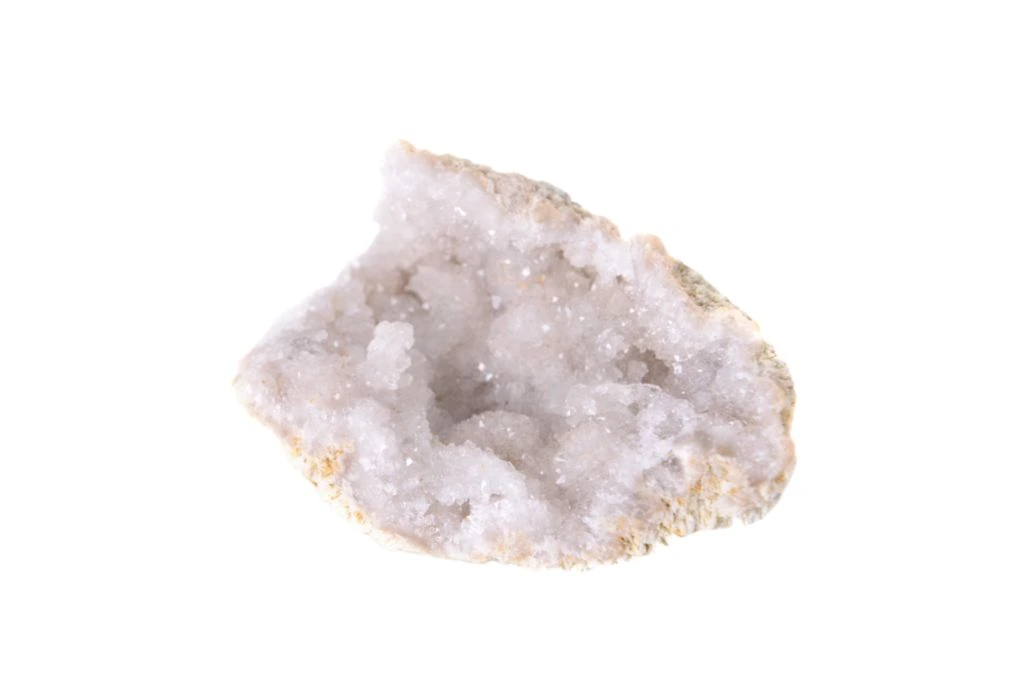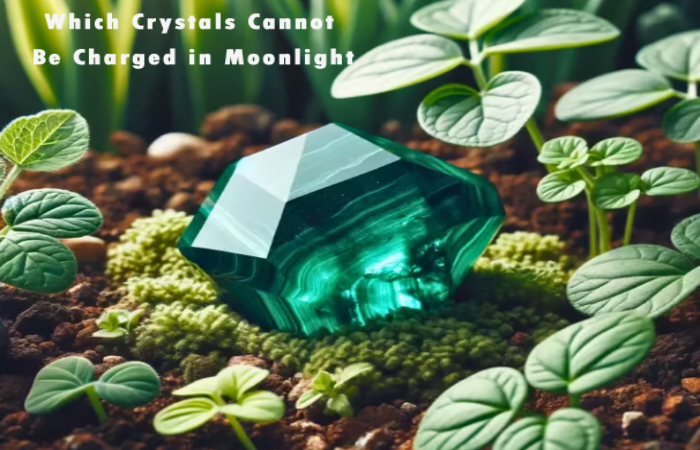Crystals such as Lapis Lazuli, Amethyst, and Opal should not be charged in moonlight as they can fade. Charging these crystals in the moonlight might compromise their quality and color intensity.
Crystals have long fascinated both the spiritual and scientific communities. They are a core component in many wellness practices because of their capacity to harness energies and support a range of day-to-day activities, such as personal growth and healing.
While some crystals, like clear Quartz or Moonstone, thrive under the moon’s glow, others demand different methods of recharging. This necessary caution ensures the preservation of their physical and metaphysical properties.
Knowing which crystals to charge in the moonlight and which to protect from it is crucial for maintaining their beauty and effectiveness. If you want to fully harness its potential benefits, you must approach crystal care with knowledge and respect.

Credit: www.allcrystal.com
Introduction To Crystal Charging
Introduction to Crystal Charging unfolds the mystical world of rejuvenating crystals. People believe that crystals harness the energy of the environment. Over time, this energy may deplete. That’s when charging comes into play. Charging crystals radiate their inner energetic flame, ensuring they function at their peak vibrational capacity.
Read More: What are Menthol Crystals Used for
Importance Of Charging Crystals
Charging crystals is crucial for maintaining their energy purity. It’s like giving them a fresh breath of energy. Charged crystals resonate with beneficial vibrations. They are believed to promote healing, bring balance, and enhance manifestation abilities.
Common Methods Of Charging
Certain methodologies have gained popularity for charging crystals:
- Sunlight: Natural sunlight can refresh many crystals.
- Earthing: Burying crystals in the earth restores their energy.
- Sound: Vibrations from sound bowls or chants may cleanse them.
- Water: Natural water sources can also charge some stones.
Yet, moonlight stands out as a gentle, universal charger, but not all crystals are suited for it. Some may fade in color, while others might get damaged.
The Role Of Moonlight In Crystal Practices
The Role of Moonlight in Crystal Practices remains a fascinating aspect of energy work. Many believe that moonlight can purify and rejuvenate crystals. The serene, reflective light of the moon offers an ideal energy for crystals to absorb and store. This custom has its roots in the age-old belief in the moon’s mystical powers.
Historical Significance
Since ancient times, moonlight has played a crucial role in rituals and spiritual practices. Civilizations across the globe have turned to the lunar cycle for guidance, using the new moon and full moon phases as times of renewal and charging. Practitioners would place crystals under the gentle glow of the moon to imbue them with its energy.
Types Of Crystals Typically Charged By Moonlight
When it comes to charging crystals, not all stones resonate with lunar energy. Here is a list of crystals frequently charged under moonlight:
- Amethyst – Known for its calming energy.
- Clear Quartz – Amplifies energy and thought.
- Moonstone – Aligns with the moon’s natural cycle.
- Rose Quartz – Opens the heart to love and peace.
- Selenite – Provides clarity of mind.
Each crystal has a unique composition and structure, which may react differently to moonlight. Users should mind the mineral makeup and coloration to determine suitability for moonlight charging.
Limitations Of Moonlight Charging
The allure of charging crystals under the moonlight often overshadows its limitations. Yet, not all crystals resonate with lunar energies. Understanding which crystals cannot be charged in moonlight protects both their integrity and your well-being.
Factors Affecting Crystal Charging
Crystal enthusiasts recognize that not all stones are alike. Their unique compositions demand careful charging methods. Several factors play a pivotal role:
- Mineral hardness: Softer crystals may degrade.
- Color sensitivity: Certain colors can fade.
- Chemical structure: Moisture absorption can cause damage.
For instance, halite, being salt-based, dissolves easily. On the contrary, delicate crystals like selenite can also degrade with prolonged exposure to moisture in the air.
Potential Risks In Moonlight Exposure
Moonlight exposure poses real risks to some stones. Key concerns include:
| Crystal | Risk Factor |
|---|---|
| Amethyst | Color Fading |
| Opal | Water Absorption |
| Pyrite | Oxidation |
Notably, amethyst could lose its vibrant hue. Opals are hygroscopic, pulling moisture that may cause cracks. Pyrite pales when exposed to humidity.
By respecting these limitations, crystal owners ensure their treasures are charged without harm. Smart charging decisions not only maintain the physical condition but also the energetic quality of the crystals. Exercise caution and thorough knowledge before choosing moonlight as your charging method.

Credit: www.wikihow.com
Crystals Unsuitable For Moonlight Charging
Some crystals should not charge under the moonlight. Special care keeps these gems safe. Incorrect charging might harm them. Make sure to charge crystals correctly for their best qualities to shine.
Sensitive To Light
Fading and discoloration can occur in light-sensitive crystals. These stones need shade for their energies to thrive. Direct moonlight can change their appearance. Amethyst, Rose Quartz, and Aquamarine can lose vibrancy if left in the moonlight for too long. So these crystals should be placed in indirect light, away from windows and direct moon rays.
Prone To Water Damage
Some crystals don’t mix well with water, which can come with moonlight charging. Moonlight often means dew or moisture can settle on stones. This exposure damages water-soluble crystals. Malachite, Selenite, and Halite are examples that should avoid any water contact.
Best to keep these dry and safe indoors during moonlight charging sessions. Here’s a list of crystals sensitive to light and water:
| Crystal | Light Sensitive | Water Sensitive |
|---|---|---|
| Amethyst | Yes | No |
| Rose Quartz | Yes | No |
| Aquamarine | Yes | No |
| Malachite | No | Yes |
| Selenite | No | Yes |
| Halite | No | Yes |
For best results, always refer to a crystal care guide
Match your crystal with a suitable charging method. This ensures its energy remains strong and clear. Knowing which crystals to keep out of moonlight is part of good crystal care. It maintains their beauty and potency.Alternative Charging Methods For Sensitive Crystals
Some crystals are too delicate for moonlight charging. This doesn’t mean they don’t need charging. Let’s explore alternative methods to recharge your precious stones with vibrant energy. Each technique offers unique benefits to your gemstone’s well-being.
Sunlight As A Substitute
Sunlight can energize crystals too. Place sensitive crystals in the direct morning light. Limit exposure to prevent color fading or structural damage. Consider a brief sunbath—up to 30 minutes—for stones like Amethyst.
Earth Charging Techniques
- Bury stones in the groud for 24 hours.
- Choose a peaceful outdoor spot.
- Mark the spot to find crystals later.
Earth’s natural electromagnetic field recharges stones gently. This mirrors the way crystals form over millions of years.
Salt Water Cleansing Caveats
Immerse crystals in salt water to cleanse energies. Not all crystals tolerate salt well. In the case of porous stones like Opal or Pyrite salt water should be avoided.
| Crystal | Can Use Salt Water? |
|---|---|
| Quartz | Yes |
| Opal | No |
For safe cleansing, use a dry salt bed instead. Place your crystal on top of a bed of sea salt.
Maintaining The Integrity Of Crystals
Crystals bring beauty and energy into our spaces. Like all precious items, they require proper care. Not all crystals can soak up the moon’s glow for charging. Certain crystals fade, crack, or deteriorate with improper exposure. This guide focuses on ensuring they remain vibrant and energetically pure.
Proper Handling And Storage
Keep crystals shining and powerful with correct handling. Wrap soft stones like selenite and kyanite in silk or velvet. This prevents scratches. Harder crystals such as quartz can nestle in a fabric-lined box. Avoid direct sunlight and heat for delicate stones that may get damaged.
- Avoid water for friable or metallic minerals like pyrite or halite.
- Use a soft brush to dust off your crystals gently.
- Assign a special spot where each crystal can rest undisturbed.
Identifying Fakes And Treated Stones
Preserve the potent vibrations of genuine crystals. Know signs of fakes and treated stones. Natural inclusions and temperature response reveal real gems.
- Examine under light: Real stones often have unique internal patterns.
- Feel for unnatural smoothness: This often signals a synthetic stone.
- Check for color uniformity: Uneven color distribution can mean authenticity.
Connect with a reputable dealer to ensure your crystals are legitimate. Trust your intuition and handle crystals with love and care. Genuineness enhances their natural energies.
Best Practices
Some crystals are sensitive to the moon’s energy. Know which ones to charge under the starry sky and which to keep aside. Let’s explore personalized rituals and intuitive care for your crystal companions.
Creating Personalized Charging Rituals
Charging crystals is a unique journey. It does not follow a one-size-fits-all approach. Create rituals aligning with each crystal’s nature. Use non-moonlight methods for sensitive stones. This may include burying them in the earth or using sound vibration. Remember to charge your crystals with intent.
Embracing Intuition In Crystal Care
Trust your inner guidance in crystal care. Not all will resonate with moonlight charging. Tune in to each crystal’s energy. Some will prefer sunlight or the touch of gentle rain. Others may need grounding through contact with the earth. Listen to your intuition for signs of the best care practices.
Here are some best practices for charging your crystals:
- Identify crystals that are moonlight-sensitive.
- Use a soft cloth to handle and cleanse your stones.
- Keep a dedicated space for ritual charging.
- Follow natural cycles, like full or new moons, for charged stones.
- Document your experiences to refine your rituals.
Credit: www.quora.com
Frequently Asked Questions On Which Crystals Cannot Be Charged In Moonlight
Can All Crystals Be Charged By Moonlight?
No, not all crystals can be charged under moonlight. Certain stones like Amethyst may fade, whereas Selenite already embodies lunar energy so it doesn’t require this type of charging.
Which Crystals Should Avoid Moonlight Charging?
Opaque stones, particularly those prone to water damage like Pyrite, Lapis Lazuli, and Hematite, should avoid moonlight charging. Under moonlight, they can deteriorate or lose their sheen.
How To Charge Crystals Not Suitable For Moonlight?
Crystals that are not suitable for moonlight can be charged by burying them in the earth, placing them on a bed of Himalayan salt, or using sound vibrations such as a singing bowl.
Why Can’t Some Crystals Be Charged In Moonlight?
Some crystals can’t be charged in the moonlight because they’re sensitive to light or moisture, which can cause them to fade in color, become brittle, or lose their luster.
Conclusion
While moonlight often enhances the energetic properties of crystals, some stones should be excluded from this practice. Remember, stones such as opal, pyrite, and lapis lazuli are best charged by alternative methods. You have to safeguard your crystals’ integrity by choosing the right charging technique.
Stay informed, resonate with your gems correctly, and let their true potential shine.



